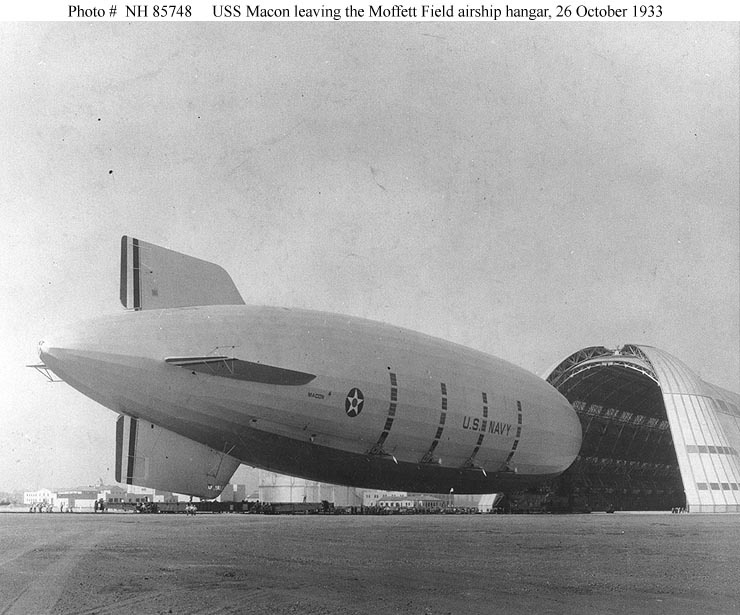Element #2 is Helium. This cache honors the site of what once must have been the largest container of Helium in the Bay Area—the US Navy Airship ZRS-5, the USS Macon.
The Macon was launched on April 21, 1933 in Akron, Ohio and cost $2.5 million to build. It was built by the Goodyear-Zeppelin Co, a joint venture between the Goodyear Tire and Rubber Co., and the Zeppelin Company of Germany.

An airship differs from a blimp in that an airship has a rigid internal frame and gas cells, instead of being essentially a big balloon. The Macon was held aloft by 12 large cells containing Helium.
(I had planned on calling this cache Element #1, but upon further research, learned that the Macon was filled with Helium, not Hydrogen, as I had thought. It was built right at the time when the dangers of using Hydrogen in airships were becoming apparent and airship designers were switching to Helium. The Hindenburg was built two years earlier, and famously crashed and burned in 1937.)
The Macon was 785 feet long and capable of flying at 87 mph. (For comparison, the Goodyear blimps are 192 feet long.) It could carry up to 100 crew members and had sleeping berths, a mess hall and a galley. The Macon was also an aircraft carrier, as five Sparrowhawk biplanes could be launched and retrieved from the underside of the ship.
The Macon landed at the Sunnyvale Naval Air Station, now known as Moffett Field, on October 16, 1933, a base that had been opened specifically for lighter-than-air aircraft. The Macon used Moffett Field as its base for about 18 months. On February 12, 1935, it was returning from maneuvers off Point Sur when it encountered storm winds. A gust struck the ship, ripping off the previously-damaged upper tail fins and sending shards of metal into the rear gas cells. Despite battling to stay aloft, the Macon settled down on the surface of the sea, and the crew abandoned ship. Eight-one of 83 aboard survived. The crash, however, hastened the end of the Navy’s airship program.
Helium, like Hydrogen, is lighter than air, although it only has 92% of the lifting power of Hydrogen. However, unlike Hydrogen, Helium is completely inert. It doesn’t burn, it doesn’t support burning, it doesn’t do anything. Although other members of the “Noble Gas” group on the Periodic Table have been coaxed into reacting with other atoms, Helium remains aloof. Helium was first detected in the spectrum of the Sun in 1868. It was isolated on Earth in 1895. Its name comes from the Greek word, “helios” , meaning “sun”. It is the second most abundant element in the Universe, although it makes up only 0.0005% of the Earth’s atmosphere.
The cache is a small Tupperware located along a public trail on the bay side of Moffett Field outside of the perimeter fence. From the levee near the cache site, you can get a good view of Hangar One, the hangar originally built for the USS Macon, as well as the other buildings at Moffett: the wind tunnels, and Hangars Two and Three (also originally built for blimps during WW II). Nearer the cache is a facility that appears to be NASA’s junkyard, but is actually the training facility for DART, the Disaster Assistance and Rescue Team. DART has deployed for just about every major national disaster since its formation in 1986.

Blimps over Santa Clara Valley during WWII